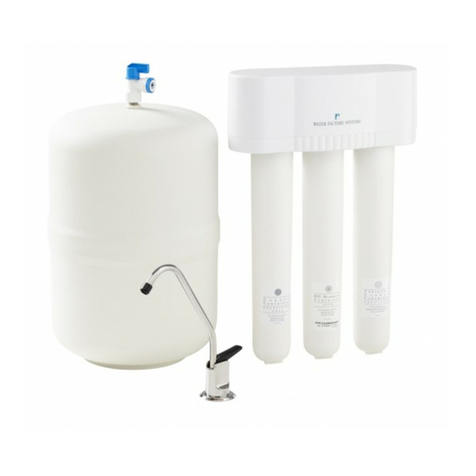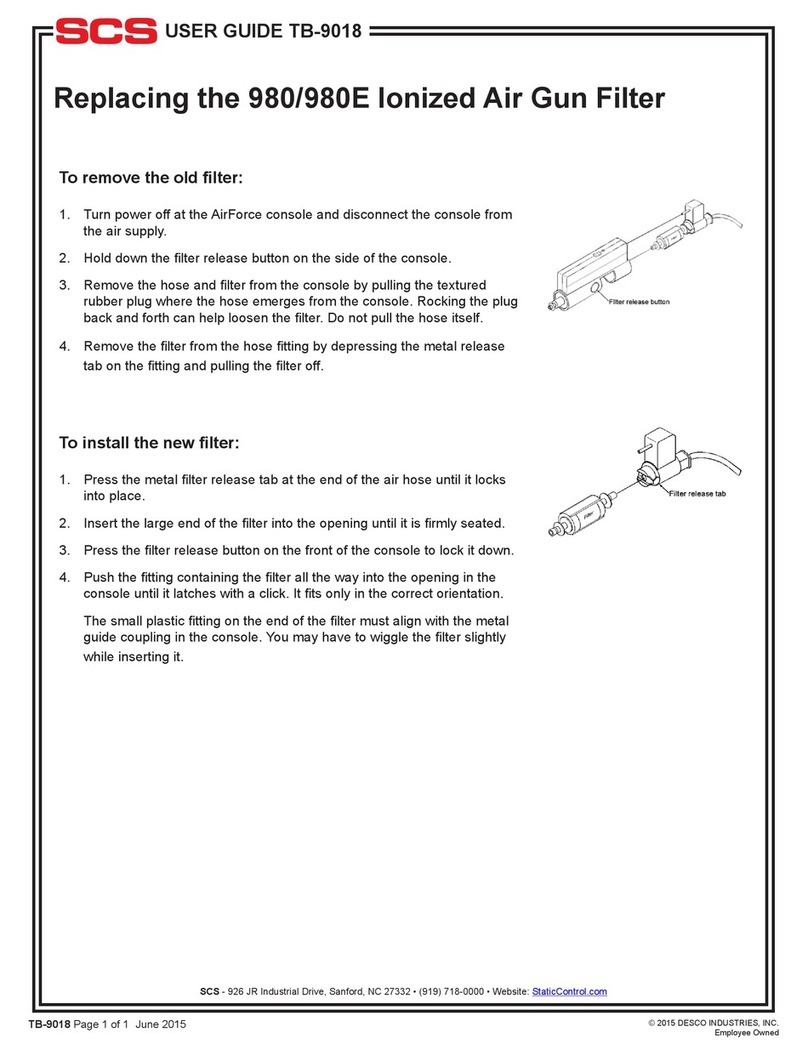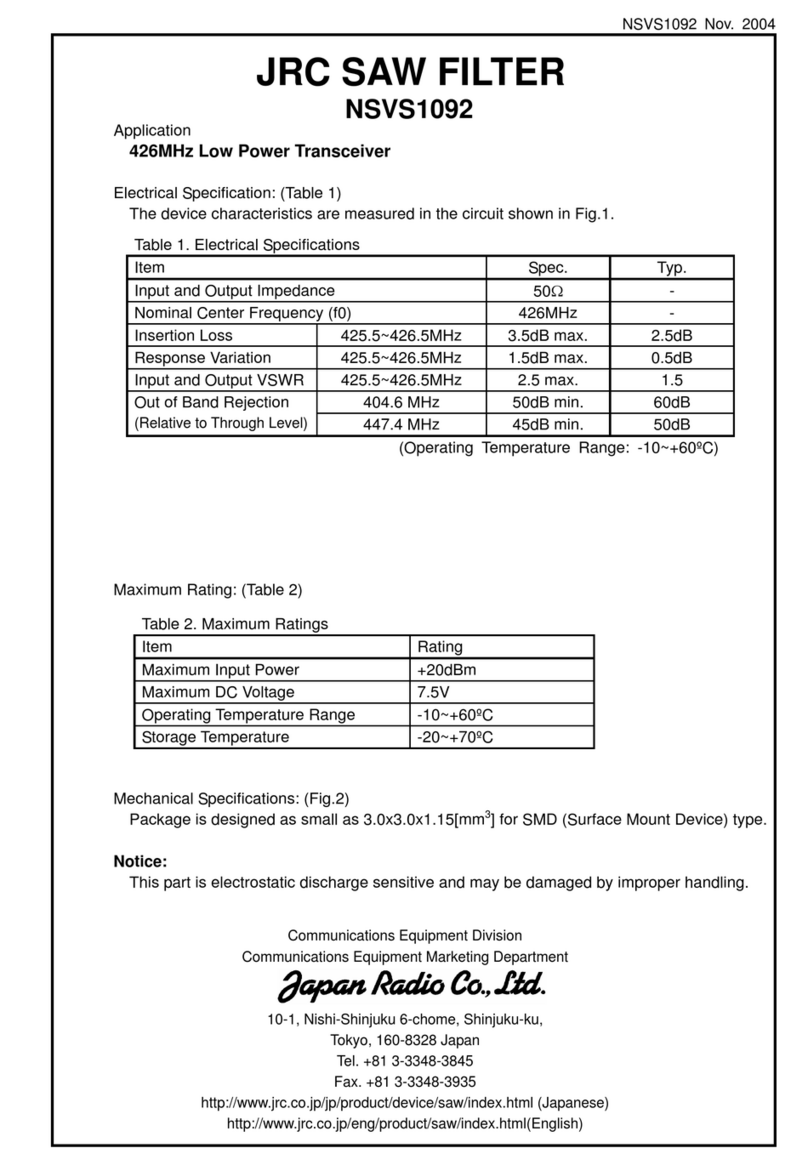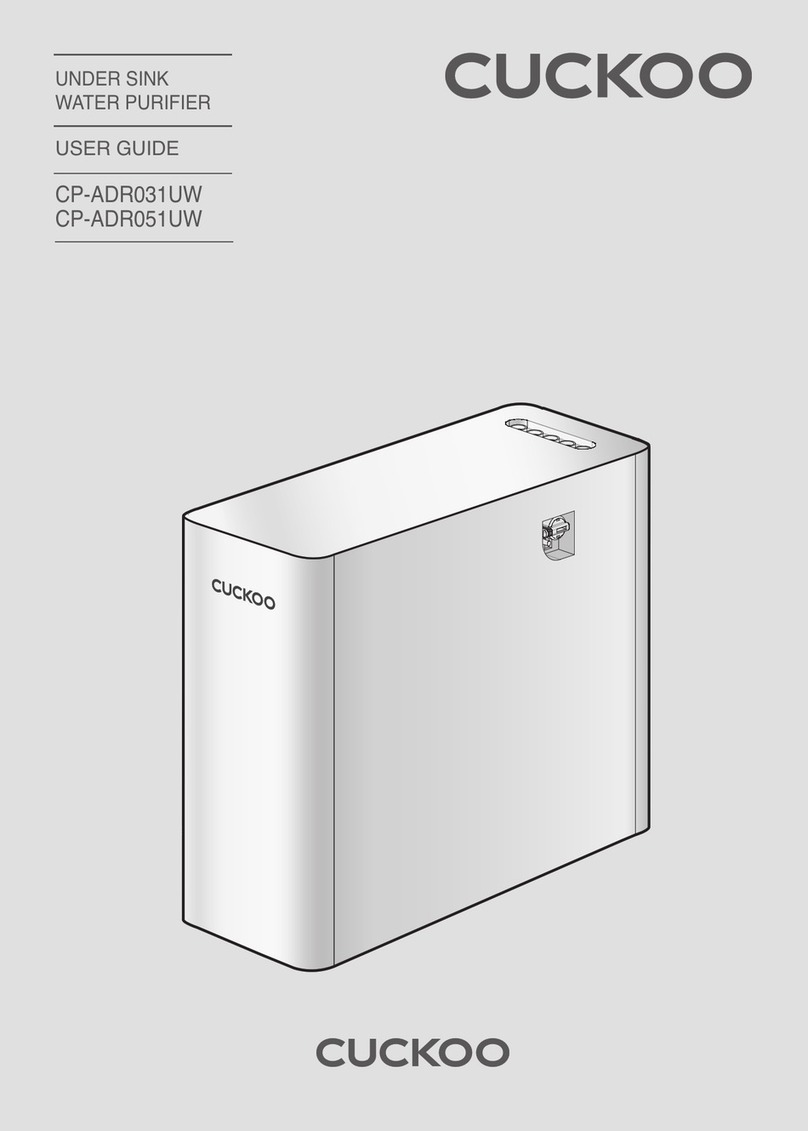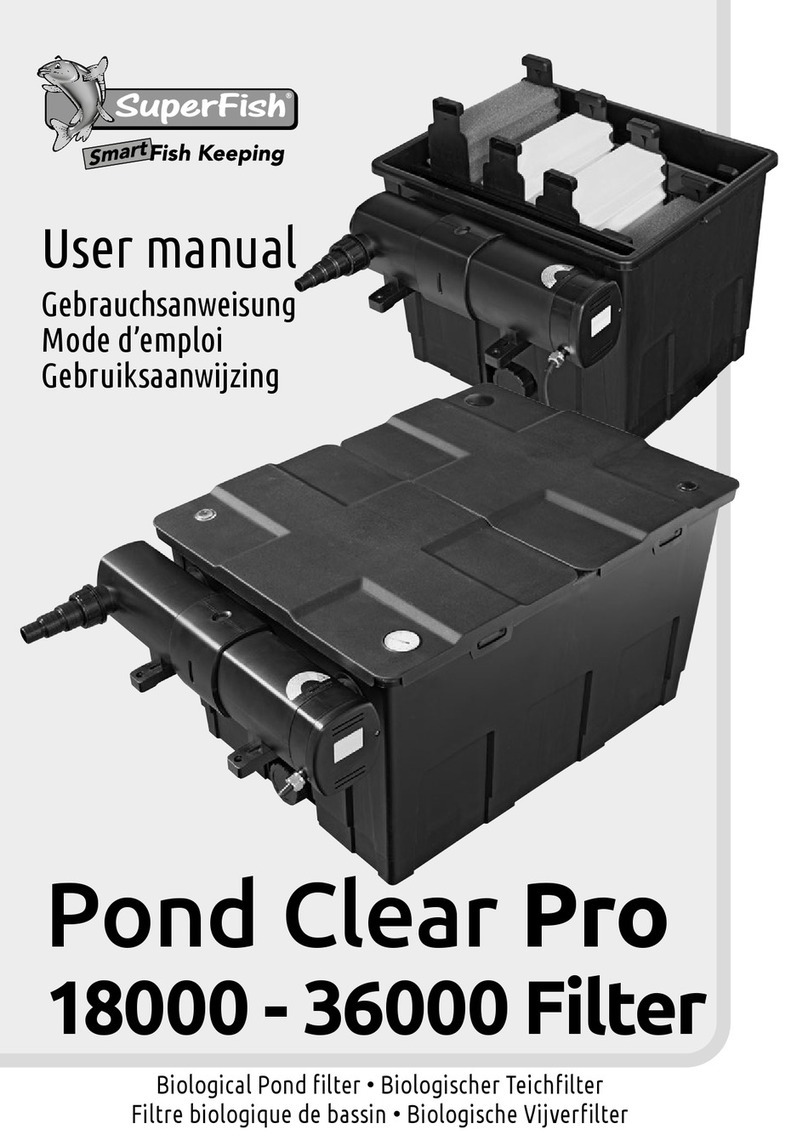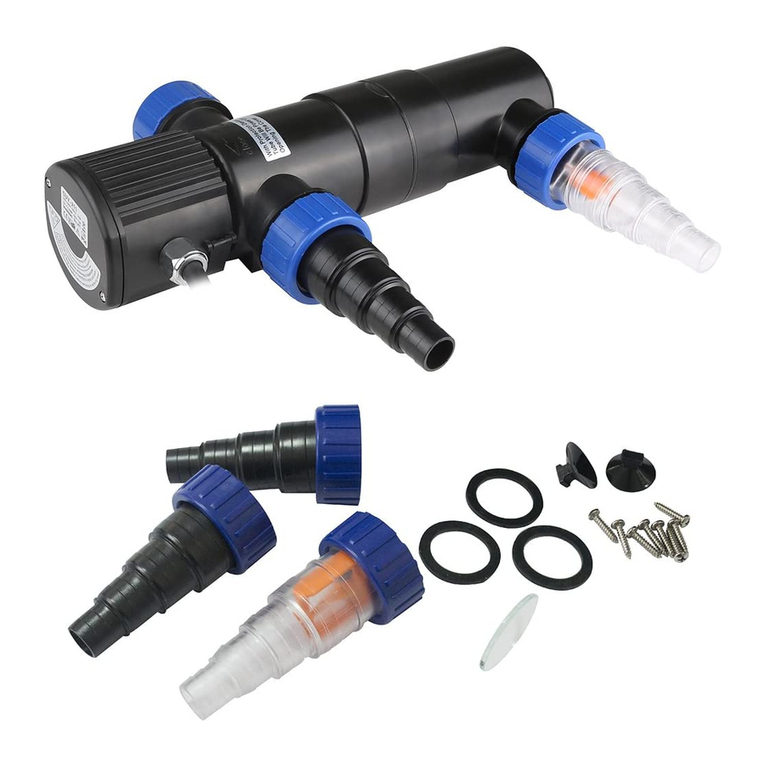FDM P 605 User manual

Separator Manual
High Speed Separator
P605
Specification No. 881099-06-03/1
Book No. 590860-02, rev. 4
www.fdm.com.pe

Published By:
Alfa Laval Tumba AB
SE-147 80 Tumba, Sweden
Telephone: +46 8 530 650 00
Te l e fa x : +46 8 530 310 40
Original instructions
This publication or any part there of may not be
reproduced or transmitted by any process or
means without prior written permission of Alfa
Laval Tumba AB.
www.fdm.com.pe

Contents
1 Read This First 9
2 Safety instructions 11
2.1 Warning signs in text 15
2.2 Environmental issues 16
2.3 Requirements of personnel 17
3 Basic principles of separation 19
3.1 Introduction 19
3.2 Separation by gravity 19
3.3 Centrifugal separation 20
3.4 Separating temperatures 20
4 Separator basics 21
4.1 Design and function 21
4.1.1 Application 21
4.1.2 Design 22
4.1.3 Outline of function 23
4.1.4 Separating function24
4.1.5 Sludge discharge function 26
4.1.6 Power transmission 28
4.1.7 Sensors and indicators 29
4.2 Definitions 30
5 Service instructions 31
5.1 Periodic maintenance 31
5.1.1 Introduction 31
5.1.2 Maintenance intervals 31
5.1.3 Maintenance procedure 33
5.1.4 Service kits 33
5.2 Maintenance Logs 34
5.2.1 Daily checks 34
5.2.2 Oil change - monthly 34
5.2.3 Intermediate Service (IS) 35
5.2.4 Major service (MS) 36
3
www.fdm.com.pe

5.3 Check points at Intermediate Service 38
5.3.1 Corrosion 38
5.3.2 Erosion 40
5.3.3 Cracks 41
5.3.4 Discharge mechanism 42
5.3.5 Bowl hood and sliding bowl bottom 42
5.3.6 Spindle top cone and bowl body nave 45
5.3.7 Threads of inlet pipe, paring disc 45
5.3.8 Threads on bowl hood and bowl body 46
5.3.9 Priming of bowl parts 47
5.3.10 Disc stack pressure 48
5.4 Check points at Major Service 49
5.4.1 Paring disc height adjustment 49
5.4.2 Radial wobble of bowl spindle 50
5.5 3-year service 51
5.6 Lifting instructions 52
5.7 Cleaning 53
5.7.1 Cleaning agents 54
5.7.2 Cleaning of bowl discs 56
5.8 Oil change 57
5.8.1 Oil change procedure 57
5.9 Lubricants 59
5.9.1 Lubrication chart, general 59
5.9.2 Recommended lubricants 60
5.9.3 Recommended lubricating oils 63
5.9.4 Recommended oil brands 64
5.9.5 Recommended oil brands 66
5.10 Vibration 68
5.10.1 Vibration analysis 68
5.10.2 Vibration switch (optional) 69
5.11 General directions 70
5.11.1 Ball and roller bearings 70
5.11.2 Before shut-downs 73
6 Dismantling & Assembly 75
6.1 Inlet/outlet and bowl 78
6.1.1 Inlet/outlet and bowl - dismantling 82
6.1.2 Inlet/outlet and bowl - assembly 87
6.2 Bowl spindle and frame 97
6.2.1 Bowl spindle and frame - dismantling 97
6.2.2 Bowl spindle and frame - assembly 105
6.3 Friction coupling 114
6.3.1 Friction coupling - dismantling 116
6.3.2 Friction coupling - assembly 119
4
www.fdm.com.pe

6.4 Flat belt and tightener 122
6.4.1 Belt replacement and tightening 122
6.5 Oil filling device 127
6.5.1 Dismantling/assembly 127
6.6 Water tank 128
6.7 Brake 128
6.7.1 Exploded view 128
6.7.2 Checking of friction element 129
6.8 Frame feet 130
6.8.1 Mounting of new frame feet 130
7 Technical Reference 131
7.1 Product description 131
7.2 Directives & Standards 132
7.3 Technical Data 133
7.4 Connection list 134
7.5 Basic size drawing 136
7.5.1 Dimensions of connections 137
7.6 Interface Description 138
7.6.1 Scope 138
7.6.2 References 138
7.6.3 Definitions 138
7.6.4 Goal 139
7.6.5 Description of separator modes139
7.6.6 Handling of connection interfaces 141
7.7 Water quality 145
7.8 Foundation drawing 146
7.9 Interconnection diagram 147
7.10 Electric motor 148
7.10.1 Crompton Greaves 148
7.10.2 ABB 149
5
www.fdm.com.pe

7.11 Performance data, in- and outlet device 150
7.12 Machine plates and safety labels 154
7.13 Storage an Installation 156
7.13.1 Introduction 156
7.13.2 Protection and storage of goods 157
7.13.3 Storage at out of operation 158
7.13.4 Before start-up 159
7.13.5 Connections to surrounding equipment 160
7.13.6 Reassembly and Start up 161
7.13.7 Storage and transport of goods 161
7.13.8 Planning of installation 164
7.13.9 Foundations 166
8 Operating 167
8.1 Operating routine 167
8.2 Clarifier Operation 168
8.2.1 Operating water interface 168
8.3 Purifier Operation 169
8.3.1 Operating water interface 169
8.3.2 Selection of gravity disc 170
8.3.3 Gravity disc nomogram 171
8.4 Before first Start 172
8.5 Start after a service 174
8.5.1 Before normal start 174
8.5.2 Starting and running-up procedure 176
8.5.3 Separation 177
8.5.4 Stopping procedure 178
8.5.5 Safety stop 179
8.6 After Safety Stop 180
6
www.fdm.com.pe

Study instruction manuals and observe the
warnings before installation, operation,
service and maintenance.
Not following the instructions can result
in serious accidents.
In order to make the information clear only
foreseeable conditions have been considered.
No warnings are given, therefore, for situations
arising from the unintended usage of the
machine and its tools.
7
www.fdm.com.pe

1 Read This First
This manual is designed for operators,
maintenance personnel and service engineers
working with the Alfa Laval separator
If the separator has been delivered and installed
by Alfa Laval as a part of a processing system,
this manual should be viewed as part of the
System Documentation. Study carefully all
instructions in any System Documentation.
In addition to this Separator Manual a Spare
Parts Catalogue, SPC is supplied.
The Separator Manual consists of:
Safety Instructions
Pay special attention to the safety instructions
for the separator. Accidents causing damage to
equipment and/or serious injury to persons or
personnel can result if the safety instructions
are not followed.
Basic Principles of Separation
This chapter describes the purpose of
separation and separation principles.
Design and function
This chapter contains a descriptionofthe
separator.
Operating Instructions
This chapter contains operating instructions for
the separator only.
Service, Dismantling, Assembly
This chapter gives instructions for the
maintenance procedures. It also contains
step-by-step instructions for dismantling and
assembly of the separator for service and repair.
9
www.fdm.com.pe

1 Read This First
Fault Finding
Refer to this chapter if the separator functions
abnormally.
If the separator has been installed as a part
ofaprocessingsystem,alwaysrefertothe
trouble-tracing instructions, in the System
Documentation.
Technical Reference
This chapter contains technical data concerning
the separator and drawings.
Installation
This chapter contains specifications and
recommendations concerning separator
installation.
NOTE
A complete reading of this manual by personnel in
contact with the machine is essential to safety.
Do not allow personnel to clean, assemble, operate or
maintain the separator until they have read and fully
understood this manual.
Ensure that all personnel who operate and service
the separator are well-trained and knowledgeable
concerning the machine and the work to be carried out.
10
www.fdm.com.pe

2 Safety instructions
The centrifuge includes parts that rotate at high
speed. This means that:
• Kinetic energy is high
• Great forces are generated
• Stopping time is long
Manufacturing tolerances are extremely fine.
Rotating parts are carefully balanced to
reduce undesired vibrations that can cause
a breakdown. Material properties have been
considered carefully during design to withstand
stress and fatigue.
G0010421
The separator is designed and supplied for a
specific separation duty (type of liquid, rotational
speed, temperature, density etc.) and must not
be used for any other purpose.
Incorrect operation and maintenance can result
in unbalance due to build-up of sediment,
reduction of material strength, etc., that
subsequently could lead to serious damage
and/or injury.
The following basic safety instructions therefore
apply:
•Use the separator only for the purpose and
parameter range specified by Alfa Laval.
•Strictly follow the instructions for
installation, operation and maintenance.
•Ensure that personnel are competent and
have sufficient knowledge of maintenance
and operation, especially concerning
emergency stopping procedures.
•Use only Alfa Laval genuine spare parts and
the special tools supplied.
11
www.fdm.com.pe

2 Safety instructions
Disintegration hazards
• When power cables are connected, always
check direction of motor rotation. If incorrect,
vital rotating parts could unscrew.
• If excessive vibration occurs, stop separator and
keep bowl filled with liquid during rundown.
• Use the separator only for the purpose and
parameter range specified by Alfa Laval.
• Check that the gear ratio is correct for power
frequency used. If incorrect, subsequent
overspeed may result in a serious break down.
• Welding or heating of parts that rotate can
seriously affect material strength.
• Wear on the large lock ring thread must not
exceed safety limit.Φ-mark on lock ring must not
pass opposite Φ-mark by more than specified
distance.
• Inspect regularly for corrosion and erosion
damage. Inspect frequently if process liquid is
corrosive or erosive.
12
www.fdm.com.pe

2 Safety instructions
Entrapment hazards
• Make sure that rotating parts have come to
acomplete standstill before starting any
dismantling work.
• To avoid accidental start, switch off and lock
power supply before starting any dismantling
work. Assemble the machine completely before
start. All covers and guards must be in place.
Electrical hazard
• Follow local regulations for electrical installation
and earthing (grounding).
• To avoid accidental start, switch off and lock
power supply before starting any dismantling
work.
Crush hazards
• Use correct lifting tools and follow lifting
instructions.
•Donot work under a hanging load.
Noise hazards
• Use ear protection in noisy environments.
Burn hazards
• Lubrication oil, machine parts and various
machine surfaces can be hot and cause burns.
Wear protective gloves.
13
www.fdm.com.pe

2 Safety instructions
Skin irritation hazards
• When using chemical cleaning agents,
make sure you follow the general rules and
suppliers recommendation regarding ventilation,
personnel protection etc.
• Use of lubricants in various situations.
Cut hazards
• Sharp edges, especially on bowl discs and
threads, can cause cuts. Wear protective
gloves.
Flying objects
• Risk for accidental release of snap rings and
springs when dismantling and assembly. Wear
safety goggles.
Health hazards
• Risk for unhealthy dust when handling friction
blocks/pads. Use a dust mask to make sure not
to inhale any dust
14
www.fdm.com.pe

2 Safety instructions
2.1 Warning signs in text
Pay attention to the safety instructions in this
manual. Below are definitions of the three
grades of warning signs used in the text where
there is a risk for injury to personnel.
D
!ANGER
DANGER indicates an imminently hazardous situation
which, if not avoided, will result in death or serious
injury.
!WARNING
WARNING indicates a potentially hazardous situation
which, if not avoided, could result in death or serious
injury.
!CAUTION
CAUTION indicates a potentially hazardous situation
which, if not avoided, may result in minor or moderate
injury.
NOTE
NOTE indicates a potentially hazardous situation
which, if not avoided, may result in property damage.
15
www.fdm.com.pe

2 Safety instructions
2.2 Environmental issues
Unpacking
Packing material consists of wood, plastics,
cardboard boxes and in some cases metal
straps.
Wood and cardboard boxes can be reused,
recycled or used for energy recovery.
Plastics should be recycled or burnt at a
licensed waste incineration plant.
Metal straps should be sent for material
recycling.
Maintenance
During maintenance oil and wear parts in the
machine are replaced.
Oil must be taken care of in agreement with
local regulations.
Rubber and plastics should be burnt at a
licensed waste incineration plant. If not available
they should be disposed to a suitable licensed
land fill site.
Bearings and other metal parts should be sent
to a licensed handler for material recycling.
Seal rings and friction linings should be
disposed to a licensed land fill site. Check your
local regulations.
Worn out or defected electronic parts should be
sent to a licensed handler for material recycling.
16
www.fdm.com.pe

2 Safety instructions
2.3 Requirements of personnel
Only skilled or instructed persons are allowed
to operate the machine, e.g. operating and
maintenance staff.
•Skilled person: A person with technical
knowledge or sufficient experience to enable
him or her to perceive risks and to avoid hazards
which electricity/mechanics can create.
•Instructed person: A person adequately
advised or supervised by a skilled person to
enable him or her to perceive risks and to avoid
hazards which electricity/mechanics can create.
In some cases special skilled personnel may
need to be hired, like electricians and others.
In some of these cases the personnel has to
be certified according to local regulations with
experience of similar types of work.
17
www.fdm.com.pe

3 Basic principles of separation
3.1 Introduction
The purpose of separation can be:
•to free a liquid of solid particles,
•to separate two mutually insoluble liquids with
different densities while removing any solids
presents at the same time,
•to separate and concentrate solid particles from
a liquid.
3.2 Separation by gravity
A liquid mixture in a stationary bowl will clear
slowly as the heavy particles in the liquid mixture
sink to the bottom under the influence of gravity.
A lighter liquid rises while a heavier liquid and
solids sink.
G0870111
Continuous separation and sedimentation can
be achieved in a settling tank having inlet and
outlet arranged according to the illustration.
Heavier particles in the liquid mixture will settle
and form a sediment layer on the tank bottom.
AB
C
D
G0870221
A. Lighter liquid
B. Heavier liquid
C. Gravity
D. Sediment layer of heavier particles
19
www.fdm.com.pe

3.4 Separating temperatures 3 Basic principles of separation
3.3 Centrifugal separation
In a rapidly rotating bowl, the force of gravity
is replaced by centrifugal force, which can be
thousands of times greater.
Separation and sedimentation is continuous and
happens very quickly.
The centrifugal force in the separator bowl can
achieve in a few seconds what takes many
hours in a tank under influence of gravity.
The separation efficiency is influenced
by changes in the viscosity, separating
temperatures and in throughput.
AB
C
G0870321
A. Lighter liquid
B. Heavier liquid
C. Centrifugal force
3.4 Separating temperatures
For some types of process liquids a high
separating temperature will normally increase
the separation capacity. The temperature
influences viscosity and density and should be
kept constant throughout the separation.
Viscosity Density difference
Viscosity is a fluids resistance against movement.
Low viscosity facilitates separation. Viscosity can
be reduced by heating.
Density is mass per volume unit. The greater the
density difference between the two liquids, the
easier the separation. The density difference can
be increased by heating.
AB
G0885921
A. High viscosity
B. Low viscosity
AB
G0885921
A. High density (with low temperature)
B. Low density (with high temperature)
20
www.fdm.com.pe
Table of contents
Popular Water Filtration System manuals by other brands
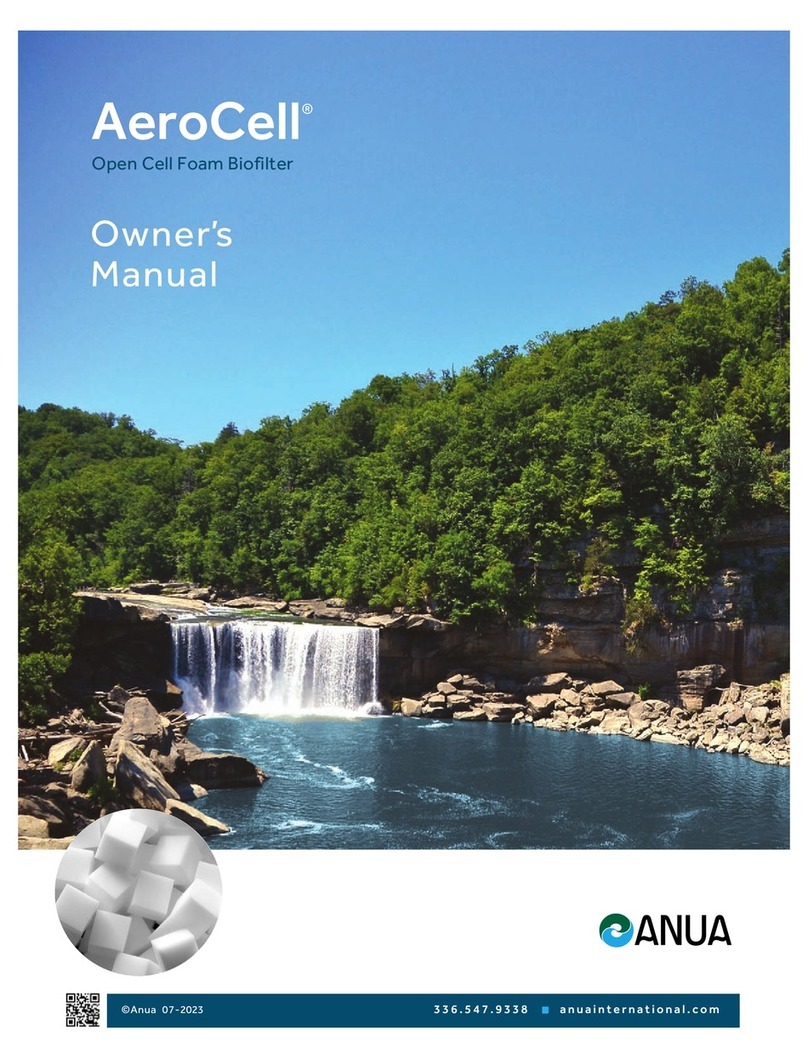
Anua
Anua Aerocell A Series owner's manual
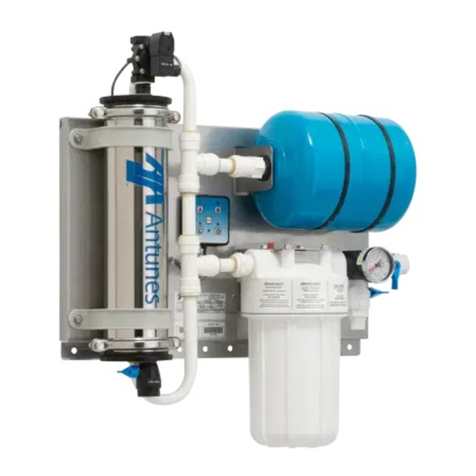
Antunes
Antunes VZN-500 Series owner's manual
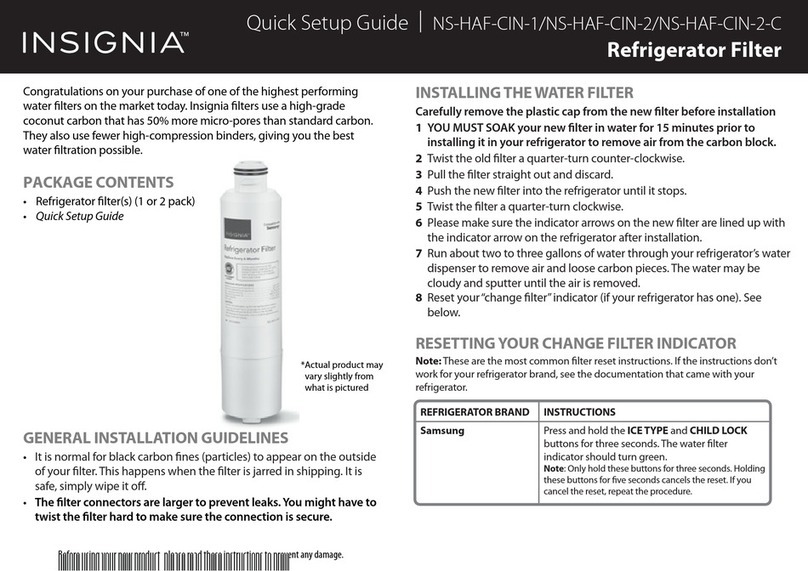
Insignia
Insignia NS-HAF-CIN-1 Quick setup guide
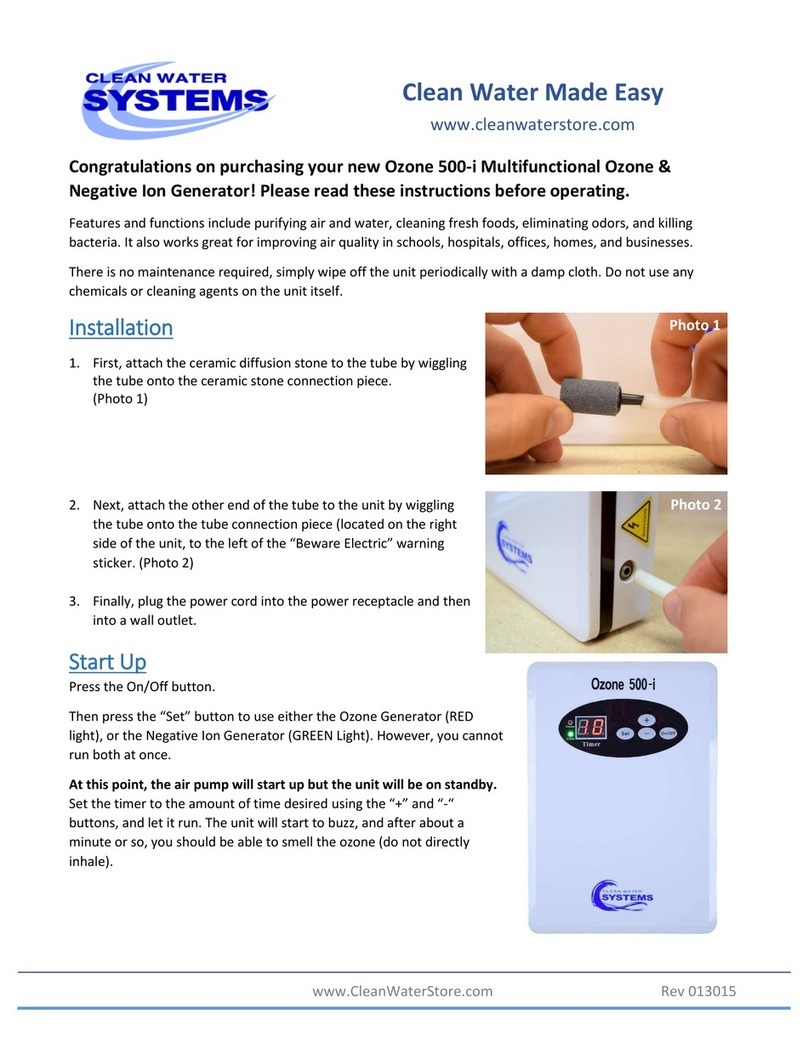
Clean Water Systems
Clean Water Systems Ozone 500-i quick start guide
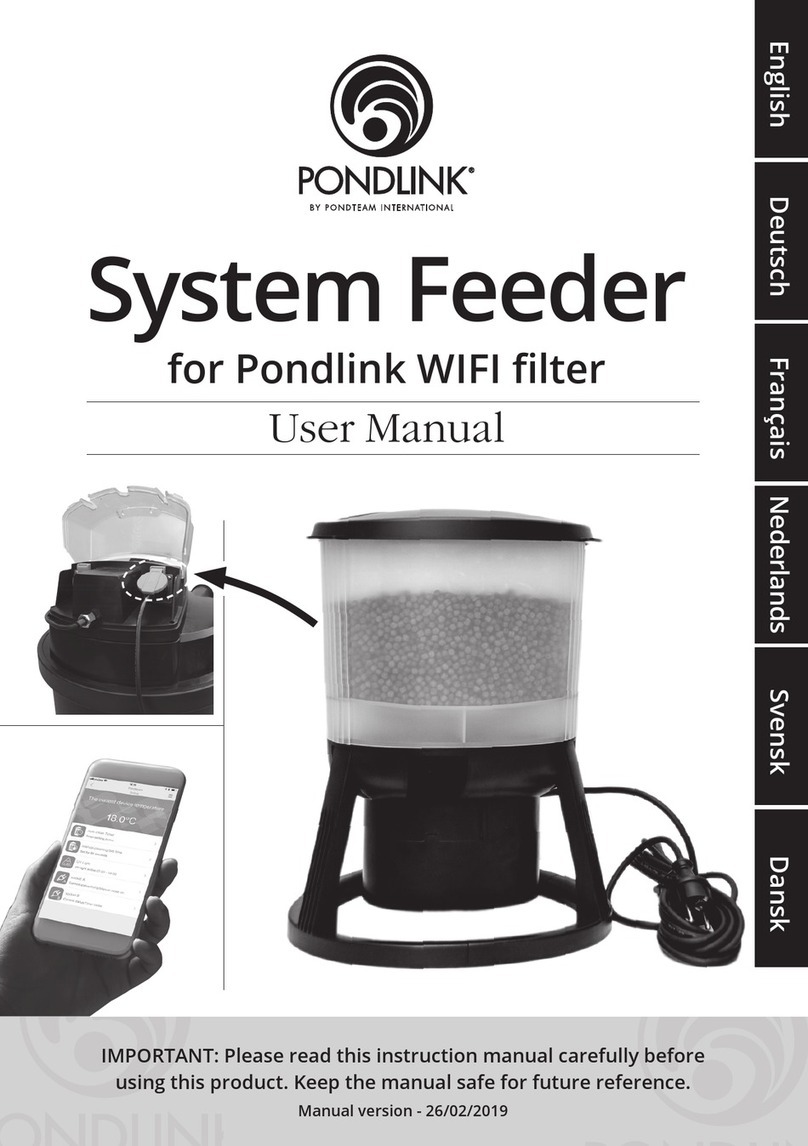
Pondlink
Pondlink System Feeder user manual
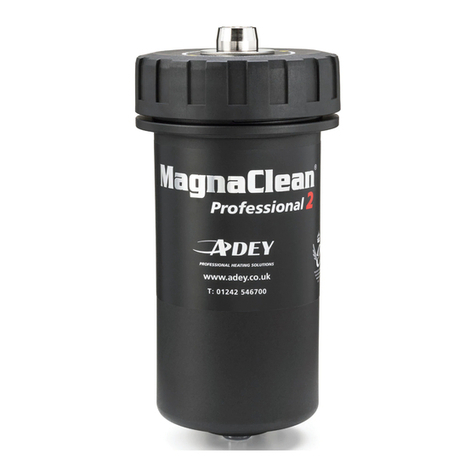
Adey
Adey MagnaClean Professional2 Installation and servicing


